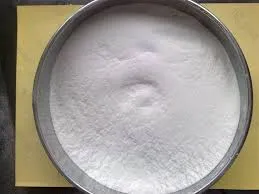
ઓગસ્ટ . 19, 2024 05:45 Back to list
Applications and Benefits of Hydroxypropyl Methyl Cellulose in Various Industries
Understanding HPMC Hydroxypropyl Methylcellulose
Hydroxypropyl methylcellulose (HPMC) is a versatile and widely used polymer that plays a crucial role in various industries, including pharmaceuticals, food, cosmetics, and construction. Characterized by its excellent film-forming, thickening, and stabilizing properties, HPMC has become an indispensable ingredient in numerous applications, making it a subject of increasing interest in both research and commercial sectors.
HPMC is synthesized from cellulose, a natural polymer obtained from plant cell walls. The modification process involves introducing hydroxypropyl and methyl groups to cellulose molecules, which enhances its solubility in water and its compatibility with various formulations. Unlike many other cellulose derivatives, HPMC is non-ionic, meaning it does not carry any charge under neutral pH conditions. This property expands its range of applications, as it can blend seamlessly with other compounds without undergoing adverse interactions.
Understanding HPMC Hydroxypropyl Methylcellulose
In the realm of food production, HPMC serves multiple functions. It can act as a thickener and stabilizer in sauces, dressings, and baked goods, improving texture and consistency. HPMC is also employed as a fat replacer, providing a creamy mouthfeel in low-fat and reduced-calorie products. Additionally, its ability to form barriers helps preserve the freshness and extend the shelf life of various food items by reducing moisture loss.
hpmc hydroxypropyl methyl cellulose

The cosmetics industry also harnesses the properties of HPMC to enhance product formulations. It is commonly found in lotions, creams, and gels, where it acts as a thickener and emulsifier. HPMC helps maintain product stability and improves the sensory attributes, such as spreadability and texture. Furthermore, it is used in hair care products to provide conditioning and manageability.
In construction and building materials, HPMC is valued for its water-retention properties and its ability to improve the workability of cement-based products. It is often used in tile adhesives, plaster, and joint compounds. By enhancing the binding properties and allowing for better control over the drying time, HPMC contributes to the durability and overall performance of construction materials.
Despite its numerous benefits, it is crucial to consider the safety and regulatory status of HPMC. Generally recognized as safe (GRAS) by the U.S. Food and Drug Administration (FDA), HPMC has a long-standing history of safe use in food and pharmaceutical applications. Nevertheless, manufacturers must ensure that their products meet specific quality and purity standards to maintain consumer safety.
In conclusion, hydroxypropyl methylcellulose (HPMC) is a multifunctional polymer that has established itself as a valuable component across various industries. Its unique properties continue to drive innovation in pharmaceuticals, food, cosmetics, and construction, promising a bright future for HPMC in both established and emerging applications. As research advances and new formulations are developed, the potential of HPMC will likely expand even further, highlighting its significance in modern science and industry. Understanding and leveraging the capabilities of HPMC can lead to the creation of superior products that meet consumer demands for quality, safety, and performance.
-
Why HPMC is a Key Additive in Wall Putty Formulations
NewsAug.05,2025
-
Redispersible Powder in Decorative Renders: Function Meets Finish
NewsAug.05,2025
-
Redispersible Powder for Interior Wall Putty: Smooth Results Every Time
NewsAug.05,2025
-
HPMC’s Water Retention Capacity in Dry Mortar Applications
NewsAug.05,2025
-
HPMC Factory Contributions to Liquid Detergents
NewsAug.05,2025
-
How HPMC Factory Products Change Detergent Textures
NewsAug.05,2025







